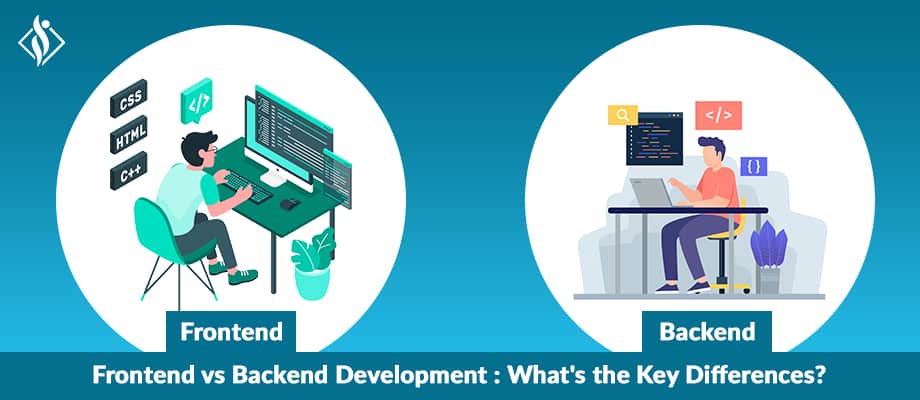Home » Software Development » How to Know Which Software Architecture Pattern to Opt for?
How to Know Which Software Architecture Pattern to Opt for?

Architecture patterns offer great means to capture good design structures, which can be reused again as and when required. To be more precise, it can be said that these patterns are basically a package of collective design decisions often found repeatedly and have pre-defined reusable properties, which defines a class of architectures.
What is Software Architecture Pattern?
The whole procedure of creating a basic structure for a software system can be termed as a software architecture pattern. It has great significance when it comes to dealing with different types of issues in different domains.
How to Choose Right Software Architecture Patterns?
It is very important to select the right software architecture pattern, as it plays a pivotal role in deciding the outcome of the project. Simply relying on the latest technology won’t always assure you of great results. By selecting a suitable software architecture pattern, it will deliver proven solutions to repetitive and prevailing problems.
Several software design teams are dependent on this architecture pattern. Experienced developers make use of software architecture patterns rather than creating artificial or random patterns at the time of designing architecture.
One important thing which you should remember is that architecture pattern should be chosen wisely as once it has been implemented, it would be very difficult to change it at a later point in time.
You should plan things carefully at the time of selecting an architecture pattern and should consider below-mentioned features:
- Price.
- Time to market.
- No. of existing & prospective users.
- Integration with other platforms/users.
First, let’s understand the
Difference between Software Architecture Patterns Vs Design Patterns
| Software Architecture Patterns | Software Design Patterns |
|---|---|
| Architecture gives an abstract view of entire system. | Design pattern carries out the implementation of specific related domains only. |
| Architecture pattern offers a reusable solution to commonly occurring problems in software architecture. | Design pattern is associated with code-level similarities. |
| Architecture pattern responsible for the blueprint and high-level infrastructure of software. | The design pattern manages code level design, for instance, work of each module, the classes scope, functions, and purposes. |
| Software architecture pattern provides a solution to issues related to architectural style. | Design pattern offers a simple way to solve localized problems. |
| Architecture pattern has a great impact on base code, which can often impact either whole application vertically or horizontally. | Design pattern is usually localized and has less impact on base code, which impacts specific sections only. |
| Examples: Microkernel, MVC (Model-View-Controller), MVV (Model-View-ViewModel), Event-driven, Three-Tier, etc | Examples: Creational patterns, structural patterns, behavioral patterns. |
Let us gain some knowledge about trending software architecture patterns, its use, and limitations:
Top 4 Trending Software Architecture Patterns
- Microservices Architecture Pattern
- Layered Architecture Pattern
- Microkernel Architecture Pattern
- Event-driven Architecture Pattern
Microservices Architecture
This architecture comprises of loosely coupled services, where each set of services is responsible to implement its associated business logic in the best way. It comprises of the self-regulating and independent codebase, which can be easily written and maintained by developers. Its components are arranged as separate units.

This makes it easy for them to deploy by making use of the streamlined and effective delivery pipeline, resulting in scalability, a high degree of application as well as great decoupling of components within the app itself. The best thing about this architecture pattern is that it allows seasoned developers to release different software versions.
The best example of this architecture pattern is Netflix, a popular video streaming application.
Useful for
- Web apps and businesses which require rapid development procedures.
- Data centers which have pre-defined boundaries.
- Websites comprising of small components.
- Teams spread in different parts of the globe.
Drawbacks
- It would prove challenging for enterprise mobile application development companies to carry out interlinking of all services and operate different services seamlessly.
- Tasks that are spread between different microservices will usually face adverse effects, especially on the performance part.
- Applications are not inclusive of tasks, which can be divided into independent units.
Layered Architecture
This architecture pattern has gained huge popularity among experienced software architects and designers alike, as it has several similarities with traditional arrangements of IT communications of established enterprises and startups.

You can classify this architecture pattern into 4 layers:
- Presentation Layer,
- Business Layer,
- Persistence Layer,
- Database Layer
Its core concept lies in splitting the code into different layers.
What makes this pattern stand out from the rest of its counterparts is that each layer has a unique role within the application and is usually marked as ‘close’. This simply indicates that any request must pass through this layer to reach the next layer. Any change made to a single layer doesn’t affect any other layer at all.
The best example of this architecture pattern is an E-commerce web application.
Useful for
- New applications need to be built and designed in a short duration of time.
- Enterprise apps that need to implement conventional IT departments and procedures.
- Inexperienced developers who are not well-versed with different types of architectures.
- Apps that require strict standards of testing process and maintenance.
Drawbacks
- If the source code where it is used is not organized properly and modules don’t have defined clear roles or relationships in place, then it can prove to be a huge problem.
- When a team of programmers misses former layers for the purpose of creating tight coupling, then this can lead to logical mess giving rise to complex interdependencies
- In case of minor modifications, full redeployment of applications needs to be done
- Not suitable or applicable for all software solutions
- If the layer is not designed properly, then it can simply increase the system’s complexity.
Do you have Software Idea? You can transform it into a Profitable Software.

Microkernel Architecture
It is also termed as a plug-in architecture pattern. It comprises of 2 main components – the core system & plug-in components.

The first one contains a minimal set of functionalities to make the system operational, whereas the second component contains additional functionalities and is usually isolated and independent in nature.
The best example of this architecture pattern is a workflow, which contains concepts such as order of different steps, evaluation of its results, and taking a decision regarding what should be the next step.
Useful for
- Software system or product which comprises of several integration points to external entities.
- Workflow applications specifically those which entail job scheduling.
- Applications that can be released with the right specifications but can be filled in with additional plug-ins, as and when required.
Drawbacks
- If plug-ins don’t have good code in place, microkernel would not be aware of plugin installation and would not work at all. Therefore, it is important that plug-ins should have appropriate code.
- It is difficult or rather impossible to change microkernel in case if there are multiple plug-ins dependent on this pattern. The only way to solve this is to carry out changes in the plug-ins as well.
- Selecting the right granularity for kernel in advance is a challenging job and furthermore, it is even more difficult to make changes in it at a later point of time.
Event-driven Architecture
This type of architecture pattern is agile and delivers great performance.
This is built of the highly decoupled event with single-purpose which carries out the processing of components that receive and process events happening at any moment. It consists of 2 topologies: Mediator and Broker.

The primary topology is used when multiple steps need to be arranged within an event by making use of the central mediator.

Whereas the second one is used when events are to be linked together by making use of a central mediator.
It organizes behavior around production, detection, and consumption of every event and their responses as well. It is an ideal choice for large or small-sized applications, as this architecture pattern has high adaptability.
Best example of this event-driven architecture pattern is an E-commerce website.
Useful for
- Proves helpful for user interfaces.
- Apps in which individual data blocks cause interaction with just a few modules.
Drawbacks
- You can carry out a testing procedure for individual modules only when they are independent in nature, otherwise, the testing process should be carried out in a fully functional system.
- Error handling can prove to be a daunting task especially when different modules are handling the same events simultaneously.
- It becomes difficult to handle from a system development perspective. If the events have different needs then it can be difficult to create a wide structure for them.
Is it necessary to hire a Software Architect?
Yes definitely, it is necessary to take the help of an expert software architect. These experts carry out proper planning and take care of architecture requirements for new applications or system integration.
They possess great knowledge when it comes to understanding and implementation of certain processes in the software lifecycle.
10+ Strong Reasons indicate Why to Hire Software Architect
- Strong understanding, in-depth knowledge, expertise and experience in managing different software platforms and technologies
- For designing a complete system based on received requirements.
- For interacting with clients, developers, and product managers to visualize models and provide initial models and designs.
- For collaborating with different stakeholders, to understand and determine different software requirements.
- Helpful for creating high-level product specifications as well as preparation of design documents.
- For troubleshooting and resolving different types of issues pertaining to the design or coding part.
- For carrying out the testing procedure and to make sure that it is fully operational and meets specific requirements.
- Reviews code and architecture, thereby ensuring design quality to prevent complexities and to achieve clarity.
- For updating software solutions.
- They provide useful guidance and assistance to the development team and deliver them architectural blueprints to follow.
- Will furnish information regarding progress reports and set specific goals as well.
How can Samarpan Infotech help you?
Samarpan Infotech has a strong team of certified and experienced software architects, who offer services to different clients depending on their specific requirements.
Our dedicated certified software architect will assist you from start till the end of the project and further too. You need not worry anything else as our expert professional will take care of everything for you.
Apart from this, the dedicated person will provide useful guidance and assistance in managing your system from scratch. By hiring our software architect, you can experience the difference yourself in work and results too!
Need Assistance with Your Software Architecture?
With over 10 years of experience in Tech industry at Samarpan Infotech with architect system, problem solving and creativity. "Today is the only day. Yesterday is gone".



